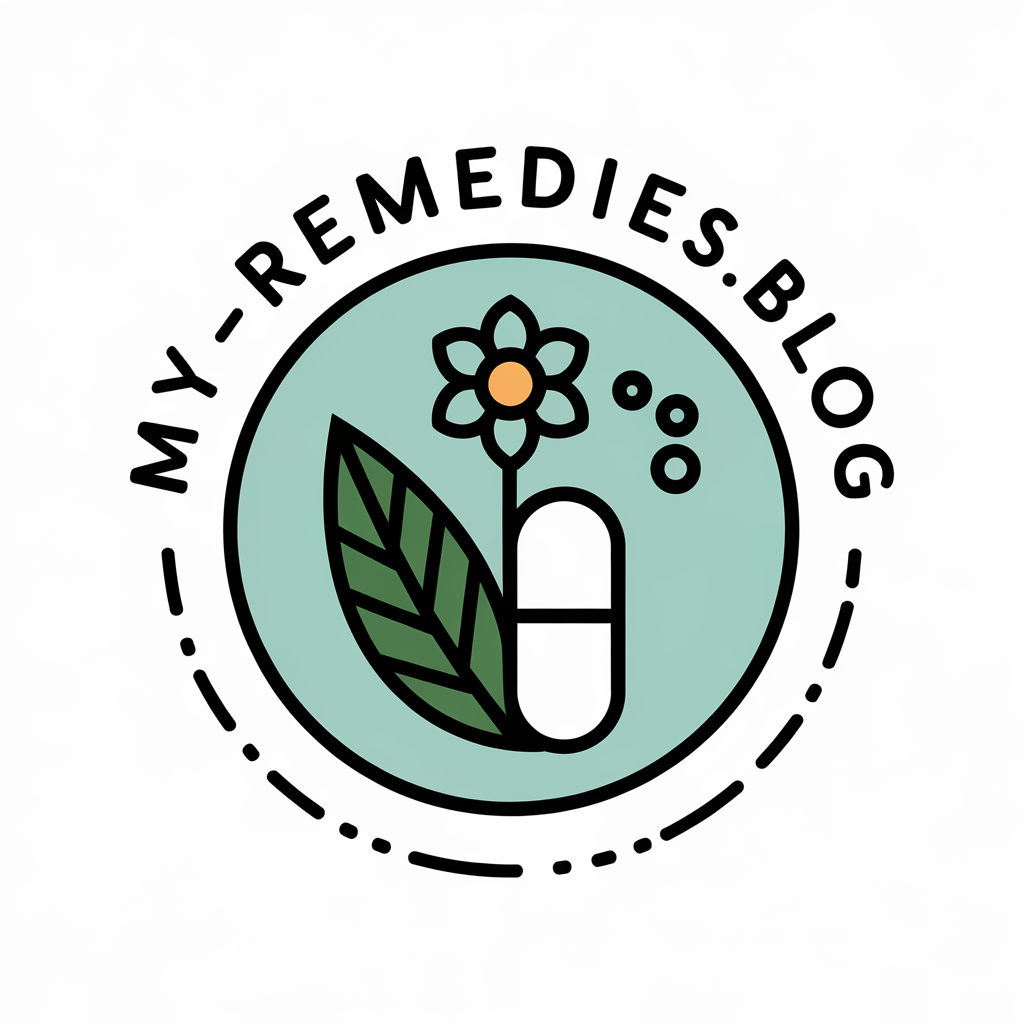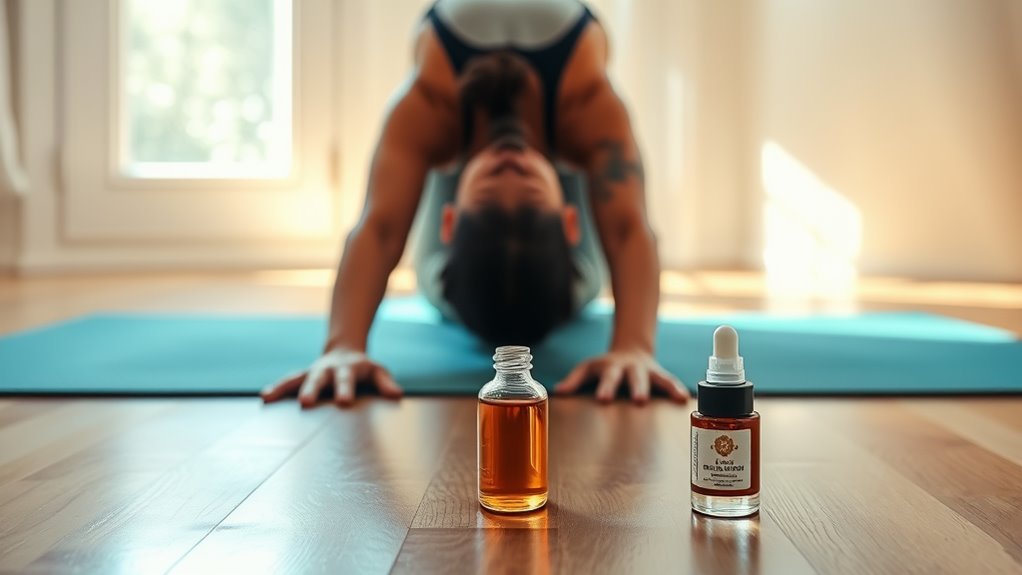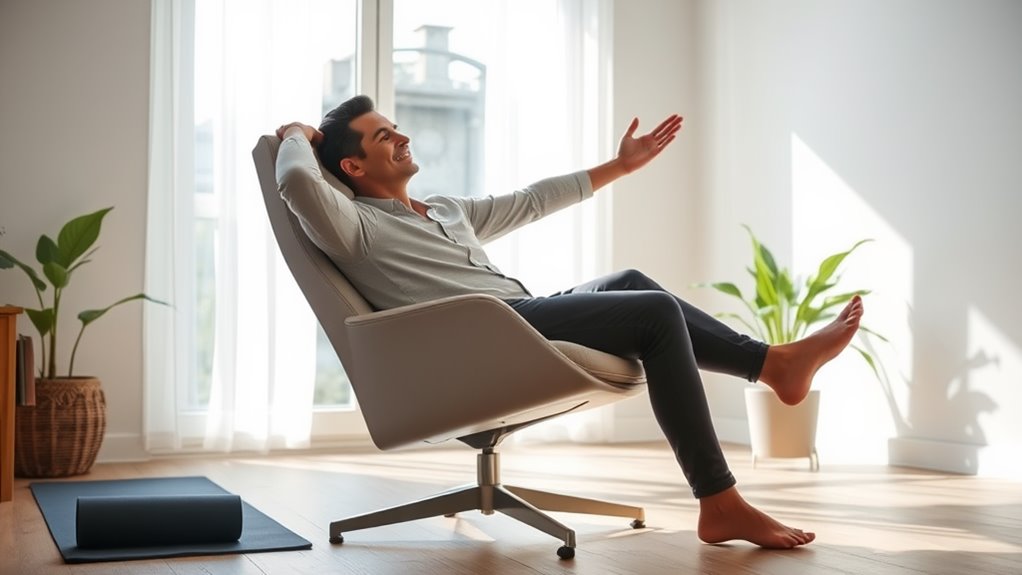Ease Back Pain Without Pills Using This Stretch and Oil Combo
To ease back pain without pills, combine targeted stretches with therapeutic essential oils. Incorporate stretches like the Cat-Cow and Child’s Pose to enhance flexibility and alleviate discomfort. Use essential oils such as lavender for its anti-inflammatory properties and peppermint for muscle tension relief. Apply a diluted blend of these oils before stretching to prepare your muscles. Consistently practicing this routine can lead to significant improvement in your back health. Discover more about how to optimize your routine for maximum relief.
Key Takeaways
- Combine targeted stretches like Cat-Cow and Child’s Pose with essential oils for effective back pain relief without medication.
- Use lavender or chamomile essential oils for their anti-inflammatory properties to help alleviate discomfort.
- Dilute essential oils with a carrier oil to prevent skin irritation before applying them to affected areas.
- Hold stretches for at least 30 seconds to enhance oil penetration and maximize pain relief benefits.
- Maintain a consistent stretching routine alongside ergonomic adjustments to promote long-term back health and flexibility.
Understanding Back Pain: Causes and Symptoms
Back pain is a common ailment that can stem from various causes, affecting your daily activities and overall quality of life. It may arise from muscle strains, poor posture, or even underlying conditions like arthritis or herniated discs.
You might experience symptoms such as sharp pain, dull aches, stiffness, or radiating discomfort down your legs. Understanding these causes helps you identify potential natural back pain remedies, like heat therapy, essential oils, or specific exercises. Recognizing triggers aids in addressing and preventing pain recurrence.
The Benefits of Stretching for Back Pain Relief
Stretching can greatly enhance your flexibility and mobility, which is essential for alleviating back pain.
By incorporating regular stretching routines, you may also improve your posture and alignment, reducing strain on your back.
Ultimately, these benefits contribute to pain relief and relaxation, making stretching an effective part of your pain management strategy. Additionally, practicing stretches like the Cat-Cow pose can specifically target spinal health and promote better alignment.
Enhanced Flexibility and Mobility
While many people overlook the importance of flexibility in managing back pain, incorporating regular stretching routines can greatly enhance mobility and alleviate discomfort.
Stretching increases the elasticity of muscles and tendons, promoting a greater range of motion. This improved flexibility allows you to perform daily activities with less strain on your back.
Additionally, it aids in the prevention of injuries by reducing muscle tightness and imbalance. When you stretch, you’re also stimulating circulation, which helps deliver essential nutrients to your muscles and tissues.
This combination of factors contributes to a more agile and resilient body. By dedicating time to your flexibility, you’re not only addressing current pain but also investing in long-term spinal health and functionality.
Improved Posture and Alignment
When your muscles and joints are properly aligned, you greatly reduce the strain on your spine, ultimately leading to less discomfort.
Stretching enhances your posture by lengthening tight muscles and strengthening weak ones. This balance promotes ideal alignment of your spine and pelvis. Improved posture not only alleviates pressure on intervertebral discs but also encourages even distribution of body weight.
As you incorporate stretching into your routine, you’ll likely notice an increase in awareness of your posture throughout daily activities, further reinforcing alignment. Regularly practicing targeted stretches can prevent misalignments that contribute to chronic back pain.
Ultimately, achieving better posture through stretching plays a crucial role in maintaining spinal health and reducing the risk of future discomfort.
Pain Relief and Relaxation
Achieving better posture not only supports spinal alignment but also contributes immensely to pain relief and relaxation.
Stretching plays a vital role in alleviating back pain by increasing flexibility and promoting blood flow to tight muscles. When you engage in targeted stretches, you release tension accumulated in the back, which can greatly reduce discomfort.
This improved muscle elasticity not only enhances your physical performance but also fosters a sense of well-being.
Additionally, incorporating essential oils, known for their anti-inflammatory properties, can further enhance the relaxation effect.
By combining stretching with the right oils, you create a holistic approach to pain management, ensuring both immediate relief and long-term benefits for your back health.
Prioritize this routine for best results.
Essential Stretches to Alleviate Back Discomfort
Incorporating essential stretches into your daily routine can significantly relieve back discomfort and improve overall mobility. Regular stretching helps alleviate tension in your muscles and enhances flexibility. Here are some key stretches to take into account:
| Stretch Name | Target Area | Duration |
|---|---|---|
| Cat-Cow Stretch | Spine and Back Muscles | 30 seconds each |
| Child’s Pose | Lower Back | 30-60 seconds |
| Seated Forward Bend | Hamstrings and Lower Back | 30 seconds |
| Standing Side Stretch | Obliques and Lower Back | 30 seconds each |
Each stretch should be performed gently, ensuring you breathe deeply throughout. Consistent practice can lead to significant improvement in your back health and overall comfort.
Choosing the Right Essential Oils for Pain Relief
How can essential oils enhance your approach to pain relief? Selecting the right essential oils is vital for effective pain management. Oils like lavender and chamomile possess anti-inflammatory properties that can soothe discomfort. Additionally, using oils with anti-inflammatory compounds can significantly enhance their effectiveness in reducing pain.
Peppermint oil, rich in menthol, provides a cooling sensation that may alleviate tension in the back muscles. Eucalyptus oil can enhance circulation, further aiding in pain relief.
When choosing oils, consider your specific symptoms and preferences. Always opt for high-quality, pure essential oils to guarantee maximum efficacy. You might also want to conduct a patch test to rule out any sensitivities. Incorporating mindfulness meditation into your routine can further support your overall well-being and pain management.
Combining the right oils with your stretching routine can create a holistic approach to easing back pain, promoting both relaxation and healing.
How to Combine Stretches and Oils for Maximum Effect
While combining stretches with essential oils can greatly enhance your pain relief strategy, it’s important to approach the process methodically.
Start by selecting oils that specifically target inflammation and discomfort, like peppermint or lavender. Before you stretch, apply a diluted essential oil blend to the affected area; this prepares your muscles and joints for movement. Engaging in focused breathing techniques can further enhance relaxation and pain relief during this process.
As you perform your stretches, focus on your breath, ensuring you’re relaxed to maximize effectiveness. Maintain each stretch for at least 30 seconds to allow the oil to penetrate deeper into the tissues. Research shows that using focused breathing techniques can further enhance relaxation and pain relief.
After stretching, consider a gentle massage using the same oil blend to further promote circulation and relaxation. This systematic approach can considerably amplify the benefits of both stretching and aromatherapy, optimizing your stress levels efforts.
Step-by-Step Guide to Your Stretch and Oil Routine
To effectively ease your back pain, start by incorporating essential stretch techniques into your routine.
Combine these stretches with recommended essential oils to enhance their benefits.
This guide will provide you with a clear, step-by-step approach to implement both elements for maximum relief.
Essential Stretch Techniques
Incorporating essential stretch techniques into your daily routine can greatly alleviate back pain.
Start with the cat-cow stretch: get on all fours, arch your back upwards, then dip it down while lifting your head. Hold each position for five seconds, repeating it ten times.
Next, try the seated forward bend: sit on the floor with your legs extended, reach for your toes, and hold for 15-30 seconds. This targets the hamstrings and lower back.
Finally, perform the child’s pose: kneel, sit back on your heels, and stretch your arms forward, holding for 30 seconds.
These stretches improve flexibility, relieve tension, and promote blood flow, providing a holistic approach to managing back pain effectively.
Recommended Essential Oils
Essential oils can greatly enhance your stretching routine and help alleviate back pain. Consider incorporating lavender oil for its calming properties, which can reduce muscle tension.
Peppermint oil acts as a natural analgesic, providing a cooling sensation that may relieve discomfort. Eucalyptus oil can improve circulation and reduce inflammation, making it another excellent choice.
When using these oils, dilute them with a carrier oil, like coconut or jojoba oil, to prevent skin irritation. Apply the mixture to the affected area before stretching, allowing the oils to penetrate your skin.
During your routine, take deep breaths to fully absorb the aromatic benefits. This combination of essential oils and stretching can markedly contribute to your back pain relief efforts.
Tips for Maintaining a Pain-Free Back Long-Term
While many people seek immediate relief for back pain, maintaining a pain-free back long-term requires proactive measures and lifestyle adjustments.
Start by incorporating regular physical activity into your routine, focusing on exercises that strengthen your core and improve flexibility.
Pay attention to your posture, whether sitting, standing, or lifting objects; proper alignment reduces strain on your spine.
Additionally, consider ergonomic adjustments in your workspace to support your back’s natural curvature.
Staying hydrated and maintaining a healthy weight can also alleviate unnecessary pressure on your spine.
Finally, practicing stress management techniques, such as yoga or meditation, can further enhance your overall well-being.





